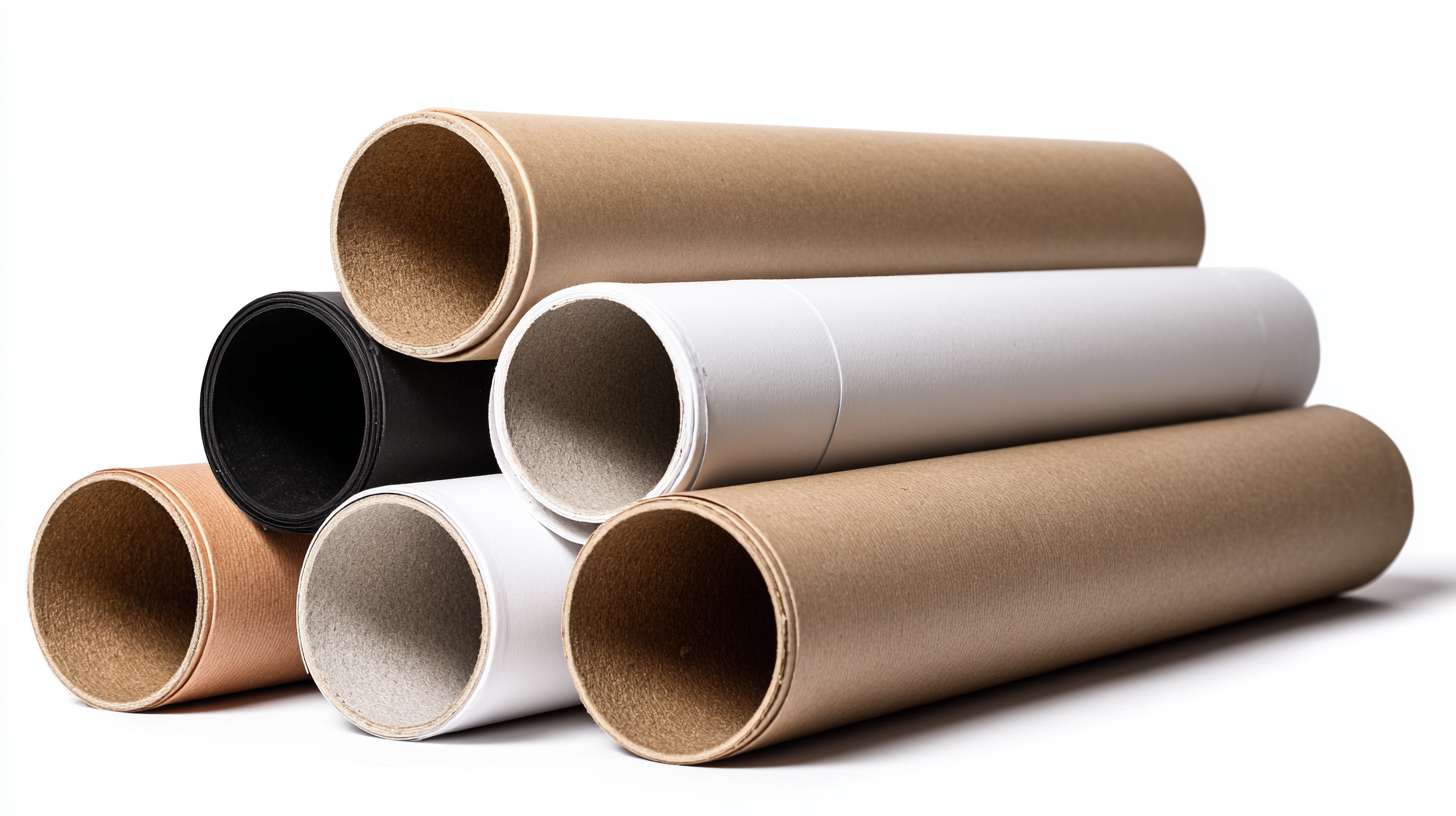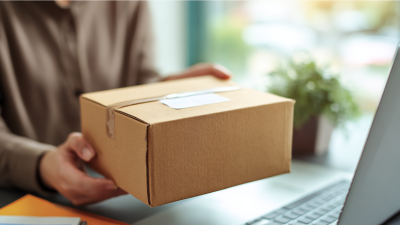How to Choose the Best Poster Tubes for Shipping Your Artwork Safely
 When it comes to shipping artwork, selecting the right materials is crucial to ensure its safety and preservation. Poster tubes for shipping have become a standard choice among artists and retailers, allowing for the secure transport of rolled prints, posters, and other delicate pieces. According to a recent report by Smithers Pira, the global packaging market is expected to reach $1 trillion by 2025, with significant growth in specialized shipping solutions like poster tubes. This statistic highlights the increasing significance of efficient packaging methods in protecting valuable items during transit.
When it comes to shipping artwork, selecting the right materials is crucial to ensure its safety and preservation. Poster tubes for shipping have become a standard choice among artists and retailers, allowing for the secure transport of rolled prints, posters, and other delicate pieces. According to a recent report by Smithers Pira, the global packaging market is expected to reach $1 trillion by 2025, with significant growth in specialized shipping solutions like poster tubes. This statistic highlights the increasing significance of efficient packaging methods in protecting valuable items during transit.
Choosing the best poster tubes for shipping involves understanding the various materials, sizes, and features available in the market. For instance, sturdy mailing tubes ideally made of spiral wound cardboard can significantly reduce the risk of damage, as they provide enhanced support and protection against impacts. Moreover, the demand for eco-friendly packaging has risen sharply, with a 50% increase in popularity of sustainable shipping options reported by Packaging Digest. This growing trend emphasizes the need for artists and businesses to not only prioritize safety but also consider the environmental impact of their shipping choices. Ultimately, the right poster tubes for shipping can make a considerable difference in keeping artwork intact while aligning with modern sustainability practices.
Understanding Different Types of Poster Tubes: A Comprehensive Overview
When choosing the best poster tubes for shipping your artwork, it's essential to understand the different types available on the market. Poster tubes generally fall into two main categories: cardboard tubes and plastic tubes. Cardboard tubes are lightweight and eco-friendly, making them a popular choice among artists and galleries. A report from the Packaging Association indicates that 70% of shippers prefer cardboard tubes due to their cost-effectiveness and ease of recycling. Conversely, plastic tubes offer superior durability and moisture resistance, which can be vital for artworks that are sensitive to environmental conditions.
Tip: Always consider the specific needs of your artwork when selecting a tube. For instance, if your piece is particularly large or heavy, opt for thicker cardboard or a reinforced plastic tube to prevent bending or damage during transit.
Another important factor is the diameter of the tube. Standard sizes range between 2 to 4 inches; however, artworks with heavy paper types or multiple rolled prints may require wider tubes for proper protection. Research from the Art Shippers Association reveals that pieces shipped in appropriately sized tubes are 50% less likely to incur damage.
Tip: Always measure your artwork before purchasing a tube to ensure a perfect fit and optimal protection during shipping.
Evaluating Tube Materials: Cardboard vs. Plastic for Optimal Protection
When it comes to shipping artwork, the material of the poster tube plays a crucial role in ensuring optimal protection. The two most common options are cardboard and plastic. Cardboard tubes are lightweight and widely available, making them a popular choice for artists shipping prints. However, they can be susceptible to bending and moisture damage, which is something to consider when selecting the right tube for valuable artwork.
On the other hand, plastic tubes offer superior durability and moisture resistance, making them ideal for shipping in varying conditions. They are less likely to crush or bend during transit, providing peace of mind for both the sender and the recipient. Additionally, plastic tubes often come with end caps that securely fit, keeping your artwork safe from dust and moisture.
**Tips:** When choosing between cardboard and plastic, consider the weight and fragility of your artwork. For heavier or larger pieces, plastic tubes might be the better option to avoid potential damage. Additionally, always verify the tube dimensions to ensure a snug fit for your artwork, reducing the risk of movement during shipping.
Key Features to Look For: Diameter, Length, and End Caps of Poster Tubes
When choosing the best poster tubes for shipping your artwork safely, it's crucial to consider key features such as diameter, length, and end caps. The diameter of the tube is essential as it determines how well your artwork will fit inside. Tubes that are too small can crease or damage the artwork, while those that are excessively large may allow the item to move around, increasing the risk of damage. A standard diameter often accommodates most prints and posters, but for oversized or multiple pieces, look for a wider tube.
Length is another critical factor. Depending on your artwork dimensions, you need a tube that can adequately cover the entire piece without bending. Adjustable or expandable poster tubes are advantageous, as they can accommodate various lengths. For example, some models extend significantly, giving versatility for different sizes. Lastly, examine the end caps; secure and durable caps prevent water and dust from entering, ensuring your artwork remains in pristine condition during transportation. Tubes with robust end caps contribute to the overall protection of your artwork, shielding it from external elements.
Impact of Tubing Quality on Shipping Costs and Delivery Safety
When shipping artwork, the quality of the poster tubes used can significantly impact both shipping costs and delivery safety. According to a report by the Packaging Institute, high-quality packaging can reduce damage during transit by up to 30%. This reduction is crucial when transporting valuable pieces of art, as a single incident of damage can lead to costly replacements and loss of revenue. Investing in sturdy poster tubes made from resilient materials, such as heavy-duty cardboard or reinforced plastic, provides much better protection for delicate pieces, ensuring they arrive at their destination in pristine condition.
Moreover, the choice of tubing also affects shipping costs. The Global Packaging Market Report indicates that using lightweight yet robust packaging materials can lower shipping expenses by approximately 20%. Carrier services often charge based on the dimensional weight, hence, a well-designed, appropriately-sized poster tube can minimize both volumetric weight and the potential for damages during transit. By prioritizing quality and dimensional efficiency in poster tubes, artists and galleries can ensure safe delivery while also managing shipping expenses effectively, making it a smart choice for anyone involved in shipping artwork.

Relevant Shipping Regulations and Standards for Artwork Packaging
When shipping artwork, it's crucial to adhere to relevant shipping regulations and standards to ensure safe transit. According to a report by the United States Postal Service (USPS), improperly packaged items are one of the leading causes of damage during transit, with over 30% of all claims attributed to inadequate packaging. As such, artists and galleries must familiarize themselves with the guidelines provided by shipping carriers, which outline the specific materials, dimensions, and weight limits for packages containing artwork.

Tip: Always use materials specifically designed for shipping delicate items. Heavy-duty cardboard tubes or double-walled boxes are recommended as they provide additional protection against crushing. Furthermore, ensure your artwork is wrapped in acid-free materials to prevent moisture damage and fading.
In addition to packaging standards, understanding the shipping regulations related to the origin and destination of artwork is vital. For instance, international shipments may require customs documentation, which can vary significantly from one country to another. The International Air Transport Association (IATA) notes that mislabeling or lack of documentation is a common pitfall that delays shipments and increases the risk of damage.
Tip: Research the customs regulations of your artwork's destination as each country has different rules regarding protected cultural artifacts and art items, which may require special handling or documentation.
Related Posts
-

Why Quality Postal Packaging is Essential for Reducing Shipping Damage and Costs
-

Exploring the Benefits of Premium Packaging for E Commerce Success
-

Why Cardboard is the Ultimate Choice for Eco-Friendly Shipping Solutions
-

The Future of Delivery Packaging Innovations Shaping Sustainable Shipping Solutions
-

Exploring Market Trends for Cardboard Roll Innovations at the 2025 China Import and Export Fair
-

Maximizing Profitability in the Industrial Cardboard Sector at the 2025 China Import and Export Fair
© 2025 Cardboard Tubes | Registered in England and Wales.
Company Number 2402078

